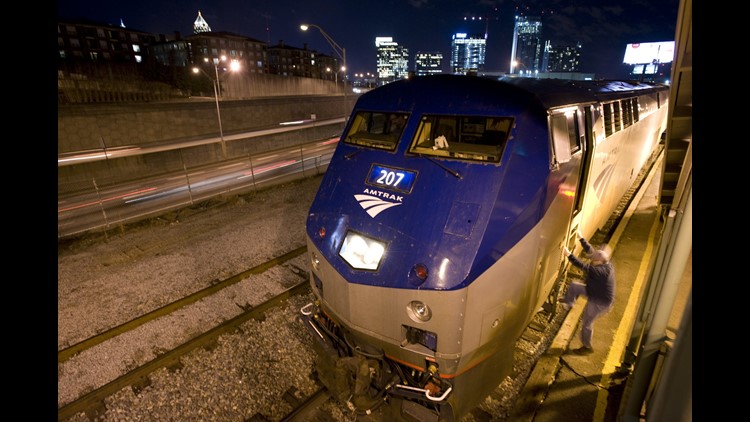WASHINGTON, DC — Amtrak rails between New York and Philadelphia are now equipped with a speed-control and collision-avoidance system.
The system, called Positive Train Control, was activated between the two cities over the weekend, the final portion of tracks in the company’s Northeast Corridor to be furnished with the technology, according to Craig Schulz, a spokesman for Amtrak. PTC was activated on direct railways between Washington and New York last weekend, Schulz said.
In May, a New York-bound Amtrak train entered a curve at Philadelphia’s Frankford Junction at 106 mph, though the curve had a speed limit of 80 mph. The wreck killed eight people and injured over 200. The train’s engineer applied emergency brakes as it entered the curve, but the locomotive and all seven passenger cars derailed, the National Transportation Safety Board said in a preliminary report.
NTSB board member Robert Sumwalt said in May that had PTC been in place at the time, the derailment would not have happened.
As of Monday, all Amtrak-owned tracks in their Northeast Corridor now have the PTC system. About 57 miles of track between New Rochelle, New York, and New Haven, Connecticut, do not have the control system, but those tracks are owned by Metro-North, said DJ Stadtler, Amtrak’s VP of operations.
“We’re excited this is being done, we pride ourselves on leading the rail industry in safety,” Stadtler said.
How this technology works
PTC is a programmable system that uses transponders in the tracks to communicate with computers on locomotives. As a train passes over a transponder, it switches the train’s onboard radio to the proper channel and helps the train receive the appropriate information about speed restrictions and routes, according to Amtrak.
The system sends a warning to the engineer if the train is speeding and applies the brakes if the engineer doesn’t respond. It also prompts trains to stop if they are mistakenly speeding toward another train, giving Amtrak “the ability to automatically avoid collisions,” Stadtler said.
The newly installed system also provides investigators with additional information should an accident occur.
“If for some reason, the train is stopped by the system, we get an alert. We have also installed inward facing cameras, so if there is an instance where a train is stopped by PTC, we could look at the tapes,” Stadtler said.
The NTSB is still investigating the cause of the May derailment, though a second update on the investigation in June revealed that Amtrak engineer Brandon Bostian was not using his cell phone for calls, texts or the Internet while he was operating the train.



